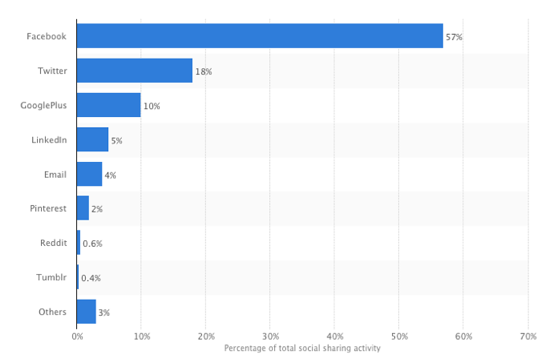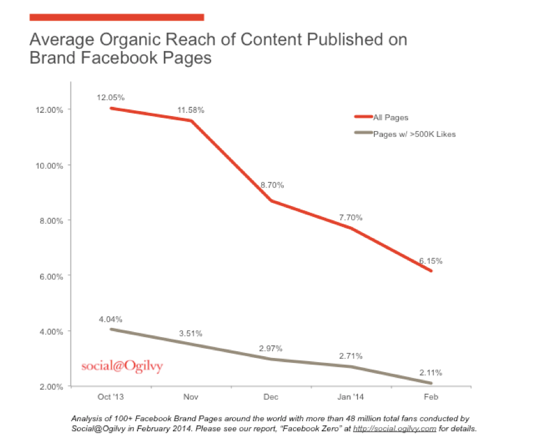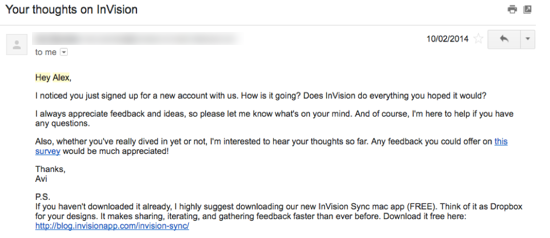Social media vs email marketing – which is right for your business?
Social media or email marketing: which one’s better for your small business? Which one can get you a bigger bang for your marketing bucks?
Most small business owners get caught up in the dilemma over where they should invest their time and limited marketing budgets to reap the most successful results.
On the one hand, social media has evolved from just a platform for sharing photos and life events to a vital marketing tool for any business. Everyone’s on Facebook, Twitter, LinkedIn, Instagram. This includes your customers and your competitors.
On the other hand, email marketing has the highest return on investment of any channel.
So which is better?
That’s a trick question because the truth is it’s difficult to compare social media to email marketing. Both serve very different purposes in your marketing strategy.
But for the purpose of growing your business effectively, let’s look at each channel’s strengths and weaknesses so you know which performs better and where it might be worth investing more of your resources.
Is social media right for your business?
It’s undeniable that social media platforms like Facebook and Instagram are revolutionary and modern marketing tools. But are they right for your small business?
Let’s look at the pros and cons of social media as a marketing tool so you can make an informed decision.
PROS
Great for communicating with customers and target audiences quickly. Social media platforms give you the opportunity to get in front of a potentially wide and targeted audience who’s actively looking to discover fresh, fun content and ideas. Whether you’re on Twitter, Facebook and Instagram, you can share interesting content with your following, engage with them and quickly answer their questions and concerns.
A higher chance to get your business in front of your target audience. The average person spends about 1 hour and 45 minutes a day on social media. Unless you’re aged 18 to 26, as CNN reported that this age groups spends an average of nine hours every day on social media! When it comes to your business, this means that being on social media can increase your chances of getting in front of prospects.
It’s better for sharing. Most people don’t share emails but they do share lots of content via social media. In fact, according to a Statista report, 57% of global content sharing activities occurred via Facebook and 18% via Twitter, whereas email only accounted for 4%.
Higher potential to go viral. Ever heard of an email going viral? Me neither. What about a social media post? That happens almost every day. When done right, social media content can provide you with long-lasting engagement. Douglas Karr wrote a great post about the type of results sticky content on social media can help you achieve. Karr says that when you send an update on Twitter or Facebook and three people click on it and share it, that’s not necessarily a bad result. What if those three people who share it each have 20,000 followers or more? This means that your post can reach 60,000 followers or more. So if you create content that your audience loves, it has the potential to go viral and the activity around it can continue for months.
Better for branding. When subscribers receive an email from you, they’re usually “warm” and aware of your brand. They already know who you are because, hey, they opted-in, right? Social media is a great tool for helping you create an image and building awareness. If you think about it – your business name and logo are far more visible on social media than on any other channel. It makes it easier for people to interact with you and to remember you.
That’s not something you can achieve as easily with email since people need to know who you are and what you have to offer before they decide they want to hear from you.
CONS
You’re building on rented land. If Facebook, Twitter or Instagram were to drop off the face of the earth tomorrow, what would happen to your business? Would it crumble? You might think that a social platform like Facebook is so popular that that’ll never happen. But remember the once-amazingly-popular MySpace? That’s proof that any social network can disappear or end up irrelevant in a few years. If you publish content exclusively on social media channels, you’re putting your business at risk. Because you have no control over what will happen to these platforms, or how your audience will react to potential changes in the future.
Few people get to see your content. Facebook’s organic reach has been dropping significantly over the years which means very few of your followers actually see your updates in their news feeds. Here’s a stat to consider: 50,000,000 businesses post 1.5 times a day to reach just 2%, a small and shrinking percentage of their audience.
According to Social@Ogilvy, “organic reach of the content brands publish in Facebook is destined to hit zero. It’s only a matter of time.”
Want to get your content seen? You need to buy Facebook ads. If this is something you’re willing to invest in, make sure you sign up for our free Social Media Advertising course to learn how to get started with Facebook and Twitter advertising.
Low conversions. Thanks to the many analytics tools, you can track the social media fans and followers who end up buying from you. That’s the good news. The bad news is that you won’t have too much to track because the conversion rate is less than three-quarters of one percent (0.71%).
Is email marketing right for your business?
Now let’s take a look at where email marketing performs better than social media (and where it doesn’t).
PROS
The numbers:
- Email had 1 billion active accounts in 2014, with the number expected to increase to almost 5.6 billion by 2019. That’s more than twice as many Facebook and Twitter accounts combined.
- In the UK email reaches 83% of the people you send it to and an average of 24,7% will open it. Compare that to Facebook’s 2% reach. Now imagine your open rate could go up as high as 40-45%. That’s something you can’t achieve with social media, but you sure can with email if, for example, you write an awesome subject line that entices more people to open your emails.
- Email marketing campaigns can see 50-100 times the click-through rates from Facebook and Twitter. This means that if you send a blog post both to Facebook and your email list, you’ll generate lots more clicks and traffic to your blog from your email than from Facebook.
- Email is almost 40 times more effective at acquiring new customers than Facebook and Twitter.
It’s more personal.
I know what you’re thinking: how can email be more personal than Facebook? But it is, and here are two good reasons why:
- If you’re targeting an older demographic, anything that’s closer to a nice ol’ fashioned written letter will get their attention. That means email.
- People might go to Facebook to ask you a question but when it comes to 1-on-1 conversations, most often you switch to email to discuss further details – whether it’s booking a session, detailing how you can help, giving a price estimate, etc.
So when it comes to having a conversation with customers, that happens over email.
It’s easier to build an email list than a social media following. Derek Halpern ran an experiment to see which would be harder: getting people to subscribe to his mailing list, or getting them to follow him on Twitter. You might assume that people are more likely to click a “Follow” button than give up their email addresses. But you’d be mistaken.
So, here’s what he did.
He sent 1,000 visitors to his email opt-in page, and 1,000 visitors to his Twitter page. The results? Derek received 500 new email subscribers, making it a conversion rate of 50%.
While he didn’t reveal the number of Twitter followers he got, he did mention there were nowhere near 500 followers.
If you’re just getting started with email marketing, check out our guide to learn the steps to building your first email list.
People feel it’s completely acceptable to get offers and promotional messages, and to buy stuff through email. So they’re not only expecting to receive “salesy” emails from you, but they’re also more likely to be in a buying frame of mind.
However, they feel it’s far less acceptable to get promotional messages via social media. That’s because your customers spend time on Facebook to chat with friends, see cute cat videos, and maybe play a game. The same goes with Twitter where most people use the platform to find and share interesting content, but are very seldom looking to buy something.
With email, your subscribers expect to receive your fantastic offers as well as interesting and educational content that’ll help them make the most of their purchase. So make a habit out of sending great content and offers and they’ll look forward to your emails.
CONS
Spam. To cut down the amount of unsolicited emails, many servers have filters in place to lessen the number of spam a person receives. Some people take further steps and add extra filters to prevent spam. The downside? Your emails could very well land in the spam folder and never get seen, even if that person has opted-in. You need to follow best practice to try and avoid this situation, but even then it’s not always possible.
Laws against spamming and “opting in/ opting out” are tight and you need to be mindful of these or you could get your domain blacklisted. So make sure you have explicit consent from customers to send them marketing messages. If you don’t, you could be breaking the law.
People can unsubscribe from your mailing list anytime they like. So even if you’ve put a lot of effort into building your subscribers list, they can always choose to leave you for any reason whatsoever. That’s why it’s important to always send high quality, targeted emails, otherwise it won’t take long until they click that “unsubscribe” link.
So which one should you choose?
How about both?
Instead of putting all your eggs into one basket and focusing on two separate marketing tools, why not use both email and social and reap the combined benefits?
For example, why not use your social media channels to entice people to sign up and grow your email list? You could give them a glimpse of what they can expect by sharing your emails on social media. This can achieve two things:
- It can get your content in front of your social media prospects (which most likely aren’t the same as your subscribers) and
- It can encourage them to become subscribers.
These are lots more things you can do to get social media and email working together to produce better results.
However, if you don’t have the time or the resources to invest in both, we recommend using email marketing when you’re looking to get more visitors to your site and entice them to get in touch or to buy from you. If you want to build awareness and engage your audience, then social media might be a better fit for you.
Which are you using: social media, email marketing or both? Tweet us @123Reg.





